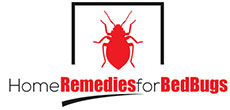 Bed bugs feed on hosts while they sleep. They are nocturnal creatures and are rarely seen during daytime unless there is a severe infestation.
Bed bugs feed on hosts while they sleep. They are nocturnal creatures and are rarely seen during daytime unless there is a severe infestation.
A rash develops when bed bugs bite. Although these rashes are not considerably harmful to one’s health, these can cause irritation associated with an intense itching sensation.
Initial symptom of bed bugs rash is the appearance of many small or raised skin bumps. The bumps are usually formed in a line generally because bugs bite more than once at the same spot.
The next symptom is the increase of rashes commonly located on the arms, legs, neck, back and face. This is simply because these parts are usually exposed during the night and bugs typically attack exposed body parts of their host.
Tiny red lumps will usually appear hours after the bite. They will then start to itch and if scratched may swell even more due to severe infection. But the bite rash may last longer if the person has violent allergic reaction to bug bites.
If you are experiencing the mentioned symptoms, chances are you have fallen victim to these bloodsucking insects. When rashes begin to manifest, do not disregard them, treat them right away to prevent further infection and irritation.
Oral antihistamines and steroid creams
Inflammation and rashes linked with bed bug bites cannot be cured immediately and will take days for them to clear. But it doesn’t necessarily means that you have to suffer from itching and discomfort while waiting for the rashes to heal and disappear. There are several medications that can ease the itching sensation. It is crucial to remember that scratching the rashes only worsen the condition and may cause more serious skin infection.
Here is the list of medications that you can use for the treatment:
· Cortaid
The best example of this is hydrocortisone that when applied directly to the affected area, can relieve the itching sensation. Hydrocortisone can be bought over-the-counter with or without a prescription.
· Dephendrydramine and Pramoxine
Creams containing a mixture of pramoxine assist alleviate pain and diphendrydramine eliminate the itching sensation on affected areas.
· Benzyl Alcohol
Lotions and creams containing benzyl alcohol treat the symptoms of itching and pain.
· Calamine Lotion
This lotion has the ability to dry out the rashes, thus facilitates a faster healing process.
· Alka-Seltzer
Dip a cotton ball into an Alka-Seltzer and rub onto the rashes to expedite their disappearance. People allergic to aspirin, should NOT use this medication.
· Prednisone
This is an example of oral steroid and is very effective in itch relief. However, this is not an over-the-counter medication and can only be obtained through physician’s prescription.
· Benadryl
Oral antihistamines such as Benadryl can effectively ease the itching sensation; however, this medication is known to cause fatigue.
· Zyrtec and Claritin
These are other examples of oral antihistamines that can help you deal with pain and itching. The advantage of these medications is that they do not cause drowsiness like other oral antihistamines do.
· Oral Antibiotic or an Antibiotic Ointment
Incessant scratching can lead to open wounds. If this happens, apply antibiotic ointment or take in oral antibiotic to prevent bacterial infection.
· Corticosteroids, Antihistamines or Epinephrine Injections
At some extreme and rare conditions, people might suffer from a severe allergic reaction associated with bed bugs bites. A physician can conduct corticosteroids, antihistamines, or epinephrine injections to the patient.
Natural Remedies
- Soak the rashes to lukewarm water above 120°F or 50°C right away. Washing the rashes regularly with antibacterial soap helps prevent bacterial growth on the rashes thus preventing infection.
- You can apply a mixture of baking soda and salt to the rashes to reduce inflammation.
- Create a paste made out of powdered oatmeal and apply it on the rashes. Rinse the applied areas to lukewarm water afterwards.
- Mix water and baking soda to form a paste. Apply the paste on the affected area with the rash. Peel it off when the paste dries out. This should help ease the itching.
- Apply lemon juice or witch Hazel directly on the rashes.




